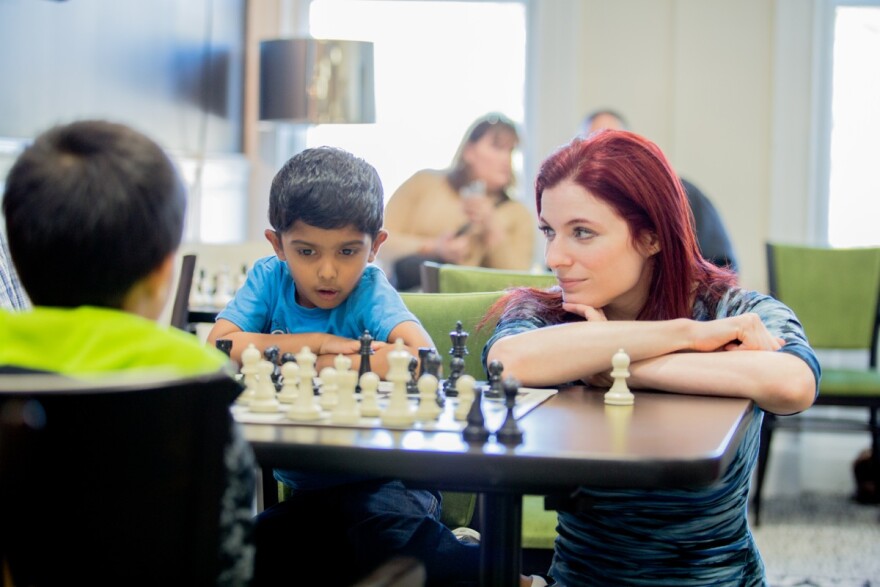Most sports have decisive results. You don’t see draws in tennis, basketball or baseball, and if there is a tie in soccer or even the NFL, at least you know both teams were pushing for victory until the very end.
Unfortunately, chess has some issues with draws.
The game of chess is difficult to play well; so, at lower levels, mistakes decide who wins and who loses, and draws stay few and far between. At a typical amateur chess competition, perhaps 5 to 10 percent of the games are drawn. But at a top-level competition, if both sides play well, a draw is the natural outcome and perhaps 60 to 70 percent of the games end without a winner.
Now, there are two problems with draws. The first: Chess fans don’t want to see draws -- they want to see a winner! But spectators aside, the real issue is when both players become afraid to lose. Instead of a fight to the finish, players often steer the game into drawing positions, or make the game boring and short by quickly trading away pieces.
Unlike other sports, chess players can actually agree to a draw in the middle of the contest! Can you imagine what would happen if the Rams and Cardinals were playing an NFL game, and all of a sudden the two teams stopped and agreed to a tie? Outrageous!
The International Chess Federation (FIDE) and many chess organizers have found ways to stop this from happening by instituting rules that keep draws to a minimum in top-level events. One popular installment is not allowing draw offers before move 30; and some tournaments completely disallow draw offers at any point of the game. This can get silly, however, when the position is completely equal in the endgame, and it is clear neither player can advance for a win.
Recently, some organizers have instituted the “soccer scoring” method in World Class chess events: Three points for a win and one for a draw, a scoring system used in last week’s London Chess Classic. Funny enough, they also added rules to disallow quick draws -- and still, most of the games ended in draws. One round, when I was doing live commentary for the Internet Chess Club, all the games ended in a tie!
Tournament organizers, FIDE, and many top Grandmasters have voiced their opinions on what to do about this touchy subject of draw-mania. Personally, I think it is up to the players to police themselves and, if some top players are more interested in drawing than playing fighting chess, organizers should seek others who are known for their fighting style. Chess fans want to see great chess games -- enough with the boring trade-fests. That will only happen if invitations go to players who are willing to risk it to get the biscuit.
Another interesting trend that I have begun to notice on the top levels of chess is the ages of the superstars. My whole life, I have heard the “peak” of chess ability came between the ages of 30 and 35: Players under age 30 just didn’t have enough experience, and then, once you turned 40, you were likely too old to fight at the top levels.
I did some snooping the last couple of weeks and put that theory to the test -- and I must admit I’m rather confused with the results. According to FIDE ratings, the top-30 players in the world have very few within that supposed “peak age.” Instead, the vast majority of players are either very young, aged 18-27, or “past their prime” at 38-46.
I don’t have an explanation for this phenomenon -- where are all the players in their early 30s? Levon Aronian (32) and Alexander Grischuk (31) are two players in the Top 10, but otherwise unrepresented is this supposed sweet spot of chess ability.
This age gap has been accented by the last two World Championship matches -- a back-to-back battle of the ages between current champion Magnus Carlsen (24) and the previous king Viswanathan Anand (45). Three years ago, the challenger was 43-year-old Boris Gelfand, who had never before played for the world title but now inexplicably seems to be getting better with advanced age. Other top players now “past their prime” are Peter Svidler (38), Vladimir Kramnik (39) and Vassily Ivanchuk (45); these were also some of the best players in the world back in the early 90s, when they were teenagers.
It’s all good news for me, 45 years old right now. Perhaps I have many more chess victories waiting in the future.
Grandmaster Ben Finegold learned the rules of chess at age 5 and was dubbed “The 40-year-old GM” after receiving the title in 2009. In between, Finegold was a U.S. Junior champion in 1989, a recipient of the prestigious Samford Chess Fellowship in 1993 and a competitor in nine U.S. Championships. He is a popular scholastic coach and commentator for elite events, and currently leads all programming as the Resident Grandmaster of the Chess Club and Scholastic Center of Saint Louis.



